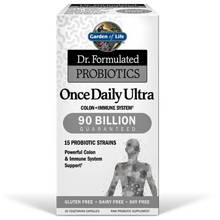Background
Glaucoma is the presence of increased pressure in the eyeball. The fluid that makes up the inside of the eye (called the vitreous humor) circulates into and out of the eye. When the flow out of the eye is slowed, pressure inside the eye rises. Holistic physicians suspect the backup of fluid in the eye may be caused by lack of integrity of the collagen in the eye tissues.
Untreated glaucoma can put pressure on and damage the optic nerve, causing visual field loss which can progress to blindness. One person may develop nerve damage at a relatively low pressure, while another person may have high eye pressure for years and yet never develop damage.
Chronic Glaucoma
Chronic glaucoma has been nicknamed the "sneak thief of sight" because the loss of visual field often occurs gradually over a long time with no other symptoms, and may only be recognized when it is already quite advanced.
Acute Glaucoma
When acute glaucoma occurs, however, one often has severe throbbing pain in one eye and blurred vision, the pupil not getting smaller when you shine a light on it, and sometimes nausea and even vomiting. This uncommon form of glaucoma is a medical emergency, and must be treated surgically immediately (preferably within 12 hours) to prevent blindness — so get to the eye doctor or emergency room immediately if this occurs.
Paradoxically, while synthetic adrenal steroids like prednisone (especially in high dose) can cause glaucoma, natural adrenal support may help lower the eye pressure.
Eye pressure is easily checked at your local eye specialist (including opticians) by simply blowing a puff of air on the eye, and should be checked each 2 years during regular eye exams.
Treatment
For chronic glaucoma, use the following. Recheck eye pressures after 6-12 weeks of treatment.
Diet and Exercise
Exercise
Avoid caffeine
Recommended Supplements
Vitamin C
Take vitamin C powder (preferably buffered, such as Perque or powdered Ester-C vitamin C ) at a dose of 7,000-35,000 mg a day (divided through the day — less if uncomfortable diarrhea). A dose of about 250 mg per pound of body weight has been shown to decrease eye pressure an average of 16 mm.
Bioflavonoids
Take mixed bioflavonoids 500-1,000 mg a day.
Magnesium
Take magnesium 200 mg a day.
Chromium
Take chromium 100-250 mcg a day.
Bilberry
Take bilberry (25% extract) 80 mg 3x day.
Fish oil
Take fish oil, or eat 3-4 servings of salmon or tuna a week.
Multi-nutrient powder
The bioflavonoids, magnesium, chromium, and 750 mg of the vitamin C from the above list can all be found in a good multi-nutrient powder (see Energy Revitalization System).
Adrenal nutrients
If you have symptoms of inadequate adrenal function (see Adrenal Exhaustion) such as low blood pressure and irritability when hungry (low blood sugar), consider a trial of adrenal nutrients for adrenal support as well as treating low thyroid if present.
Medications
Your eye doctor has a host of reasonable medications that can lower pressure as well, and using these can also help protect your vision.




